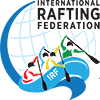Beginnings
The IRF World Rafting Championship event has its origins in the international events of Project RAFT in which up to 50 raft teams of men and women competed in various disciplines including Slalom and Down River on the Chuya River, Siberia (1989), Nantahala River, USA (1990), Reventazón and Pacuare rivers, Costa Rica (1991) and Çoruh river, Turkey (1993). Project RAFT (Russians and Americans for Teamwork) was founded by California USA river guides Jib Ellison and Mike Grant as an international peace-through-sport initiative and the first event, the Chuya Rally, was a collaborative effort between them and the Siberian river explorer and Soviet Union Master of Sport, Misha Kolchevnikov.
From 1990 to 1994 the J&B European Rafting Champs, which was R4 (4 person raft), was organized by David Goldstrom and was televised on Eurosport. The first was held in Italy and the last three were held in Austria. The format was Time Trial, Head to Head, Slalom and Triple Header.
In 1994 a World Rafting Championship was held in Italy on the Dora Baltea River and it was there that many key participants, such as Rafael Gallo and Peter Micheler, saw the need to form an international body to represent all racers, rafters, guides and all aspects of rafting.
After the event on the Çoruh River, event promoter Tony Hansen tried to get the 1994 Project Raft event to the Zambezi River, where he was Event Director for an annual rafting fun festival. Unfortunately Project Raft closed operations after their Turkey event and so Mr. Hanson obtained a sponsorship for the event with Camel (RJ Reynolds Tobacco). He also re-designed the event along slightly more competitive lines, limiting the event to the disciplines of Head to Head, Slalom and Downriver where points were gained in each discipline to determine an overall champion. This format became the basis of the IRF Race Rules. Thus began the Camel White Water Challenge (CWWC) which took place as an Open Class R6 event with men and women’s categories on the Zambezi River, Zimbabwe/Zambia (1995–1997 and 2001), Reventazón and Pacuare Rivers, Costa Rica (1998), Orange River, South Africa (1999) and Futaleufu River, Chile (2000).
The last three CWWC events were given the status of World Rafting Championships thus teams had to qualify through selection events at national and continental events in coordination with the International Rafting Federation (IRF). In the year 2000 the IRF resolved to hold the World Rafting Championships every 2 years and eliminate continental selection events in order to open the event to more nations, thus facilitating greater international development of the sport.
Consequentially the World Rafting Championships have been held on the Reventazón and Pacuare rivers, Costa Rica (1998), Orange river in South Africa (1999), Futaleufu River in Chile (2000), Gauley River in West Virginia, USA (2001), Vlatava River in Czech Republic (2003), Quijos River in Ecuador (2005), Naerinchon River in South Korea (2007) and Vrbas and Tara Rivers in Bosnia & Herzegovina (2009).
In 2010 the IRF held its first ever R4 World Rafting Championship which then alternated yearly with the R6 World Rafting Championship. This event was hosted by Dutch Water Dreams on their artificial rafting course in Zoetermeer, Netherlands (2010), and was also notable for being the debut event of the IRF’s first Youth (U19 and U23) age division competition. In 2011, the IRF returned to Costa Rica to host the WRC on a different, more challenging section of the Pacuare River. In 2012, the IRF held a first ever Youth & Masters WRC, which included the IRF’s first Master’s (40+) age division in the Czech Republic on the revamped Ceske Budejovice artificial white water course and on the Vltava River.
From 2013 onward, all 4 age divisions of Open, Masters, U23 and U19 have competed together at the IRF WRC. The IRF awards bronze, silver and gold medals to the winners of each discipline in each age division, for both men and women categories, and awards Overall Champion medals to teams based on the total points earned during the event. These events have been held in Rotorua, New Zealand (2013), Foz do Iguaçu, Brasil (2014), Citarik River, Indonesia (2015), Wadi Adventure, Al Ain, United Arab Emirates (2016), Koboke section of Yoshino River, Japan (2017), Aluminé River in Argentina (2018), and Tully River in Australia (2019).
Teams
The teams that attend the WRC are selected by their national federations through fair and credible selections. The top men’s and top women’s team from each member federation is eligible to attend. Teams consist of 6 paddlers and 1 reserve for R6 and 4 paddlers and 1 reserve for R4.
Disciplines
Rafting competitions consist of 4 disciplines – Sprint, Head-to-Head (H2H), Slalom and Downriver. The points earned in each discipline are added to determine the Overall winner and final positions. Each team has 6 members with the option to have a reserve.
The Sprint is a hard, fast, short burst of speed for the teams. It is ideally over a fairly short distance and is about 2 to 3 minutes of hard paddling for 10% of the overall points. It is always done first, cannot be on a Class 5 rapid and teams are set off one by one, hence racing the clock and not each other.
The H2H is without doubt the most visually exciting discipline as it is pitting two teams together in a fast-paced sprint for the finish line. It is ideally over a shortish distance but must be through a rapid, normally taking teams about 2 to 3 minutes to run the course. The two teams are set off together with the team having the best time in the Sprint being given lane choice. They have to negotiate 1 left hand buoy and one right hand buoy from a minimum 2 buoys on each side. This leads to tactics being played and so is not all down to strength and speed. It counts for 20% of the total points and is an elimination. The winner of each heat proceeds to the next round and eventually just 2 teams will remain for the Final.
The Slalom is the most technically challenging event and counts for 30% percent of the total points. This event demands a high level of technique and teamwork to negotiate the rafts through 12 downriver and upriver gates in powerful rapids. Touching, failing to pass or intentionally moving a gate results in a penalty. Each team runs the course twice and their best time is used to determine the results.
The Downriver is the star event and is worth 40% of the total score. The race is close to an hour of racing along of a section of continuous and powerful rapids. Technical ability and endurance are essential elements to ensuring a good position in this event which is crucial for the teams that aspire to win the Championship. The points earned by the teams in the previous events determine their position in the starting line-up in groups up to 5 rafts.







